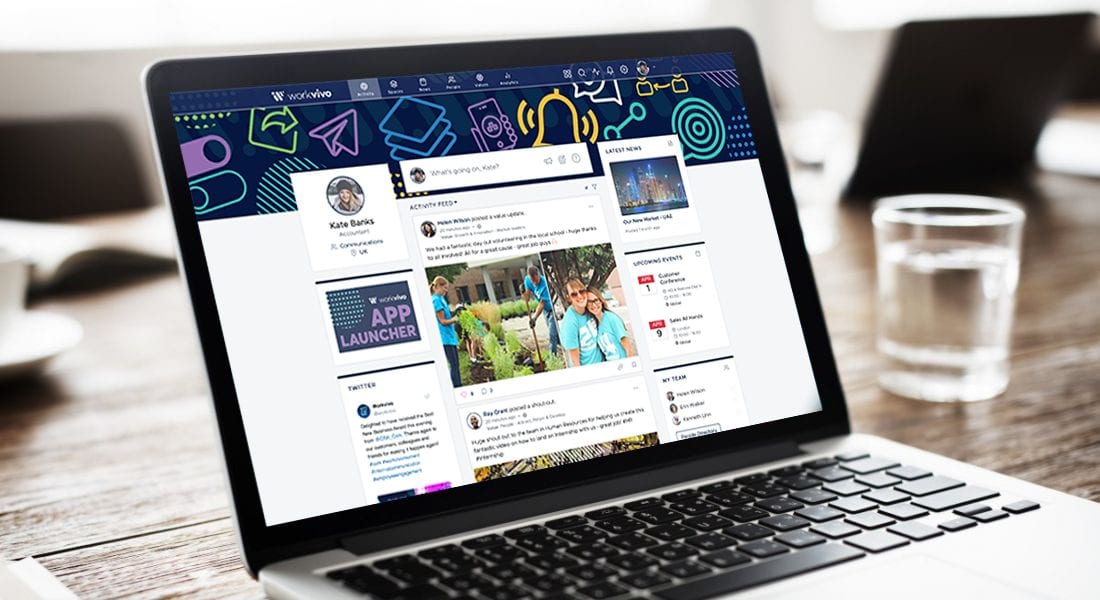Engaged Communication for Remote Employees

Anthony Cotter
Creative Director
2 Apr 2020

By Pete Rawlinson.
The importance of engaging communication.
Communication should always be a priority, especially between management and their teams, but for remote working, the need is magnified. What tends to happen when people work remotely is that communication becomes a function of a particular need in time, rather than a social interaction, as would happen in the physical workplace. It’s these random face-to-face social interactions that knit together the fabric of company and workplace culture and keeps employees engaged. So although you can help remote employees communicate, the quality and type of that communication becomes more important and apparent with a remote workforce. This quality tends to be overlooked by leadership, but as the workplace trend moves towards more remote working, the need to enable communication in a way that engages employees, will become increasingly important and shouldn’t be overlooked.
Tips for maintaining good communication in a distributed workforce
Try to augment the usual ‘temporal’ communication such as direct messaging, with group communication. Think about how employees would typically interact at the workplace and find ways to mimic this. We see some of our customers hosting virtual coffee breaks, mini-competitions during the day, creating groups to facilitate interaction between people with similar interests. It’s always important to recognize a job well done, but this is more important with am distributed workforce. Go out of your way to publicly recognize remote employees in particular. The aim is to make these employees feel part of something bigger than themselves, to minimize feelings of disconnection and isolation. Provide a window into other parts of the business that is easily accessible and always available. Finally, check-in (not check-up!) on remote employees often, making it informal and social.
Pitfalls to avoid
As soon as a remote employee starts to feel disconnected and isolated, they’re on a slippery slope to disengagement. Don’t rely on traditional methods of communication alone to handle the engagement challenge. Email, direct messaging and video conferencing can only take you so far. Look for ways to maintain a feeling of community in the minds of the remote employees. A virtual coffee break at the same time every morning is a popular choice and brings people together often more successfully than physically sitting people down in an office. Also, although as a leader it will be tempting, don’t ‘check-in’ on remote employees – that only exacerbates the feeling of isolation and adds stress to the situation; a fast track to a disengaged employee.
The risks of not making engaged communication a priority
Losing the focus on engaged communication will inevitably lead to a disengaged employee. This will affect the business in 2 ways. Firstly you’ll have an employee that will be working at partial capacity and any chance of accessing creativity from that employee will be minimal. Secondly, a disengaged employee will surely find ways (consciously or unconsciously) to let others know about it and effectively spread the negativity that fuels disengagement.
Technologies that people can avail of to help them stay connected
There is a difference between communication to transfer information, and engaged communication. By providing a means to communicate via a social community, it is possible to achieve important information transfer AND provide a ‘part of something bigger than me’ experience. We have found that the combination of best of breed communication technologies such as direct messaging with an employee social network (especially one that is also available to remote employees via a mobile employee app), keeps everyone ‘in the loop’ and able to asynchronously interact with each other. Capabilities such as personal activity feeds, posting, liking and sharing posts, shout-outs, collaboration spaces all provide the means by which remote employees can see what’s happening across the landscape of their company, hear from senior leadership and freely interact with colleagues around the world. We have seen this elevate engagement in remote employees often to levels higher than their workplace-bound colleagues.
Remember…..
All these points are especially important for employees that are not used to working remotely. Every human being is different and some people will find it difficult to stay focused in a physically disconnected environment. It’s important that leadership – especially middle management who are closer to the employee – make it their mission to immerse the remote employee in inclusion, connection, recognition and sharing. There are technologies out there that can really help here, but the recognition that working remotely is simply not the same as working together physically, it hugely important in ensuring continuity for these important employees.

